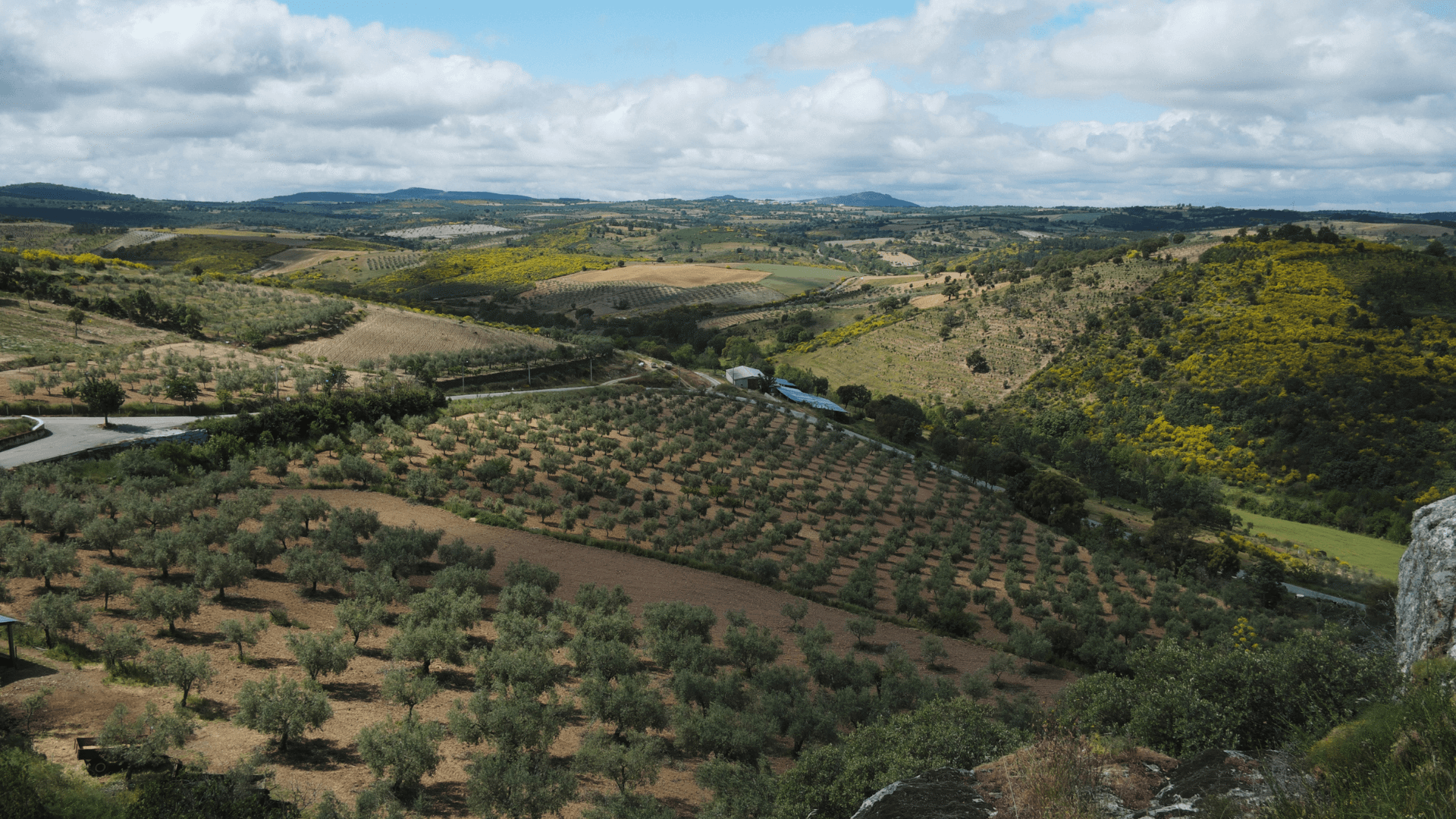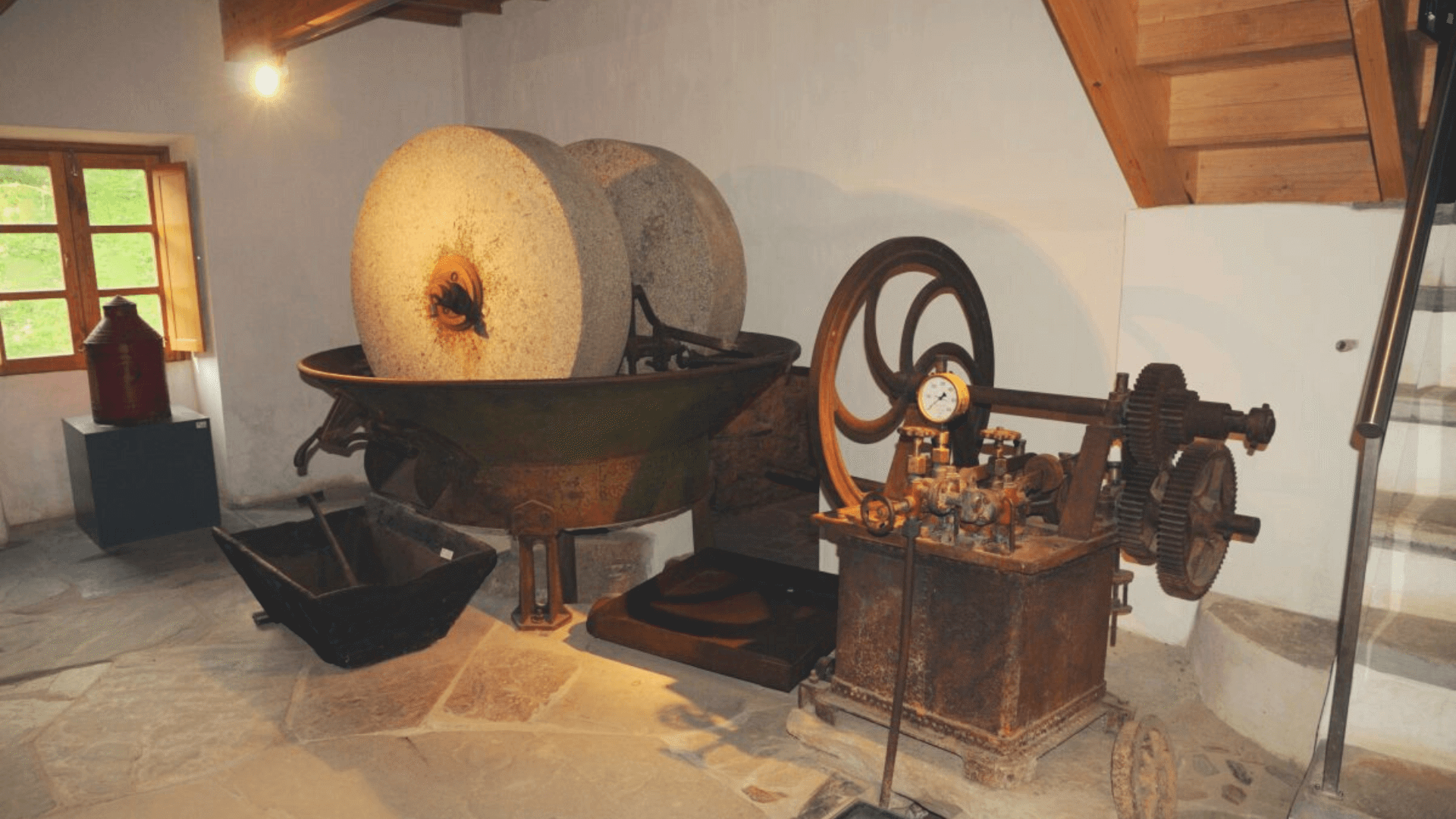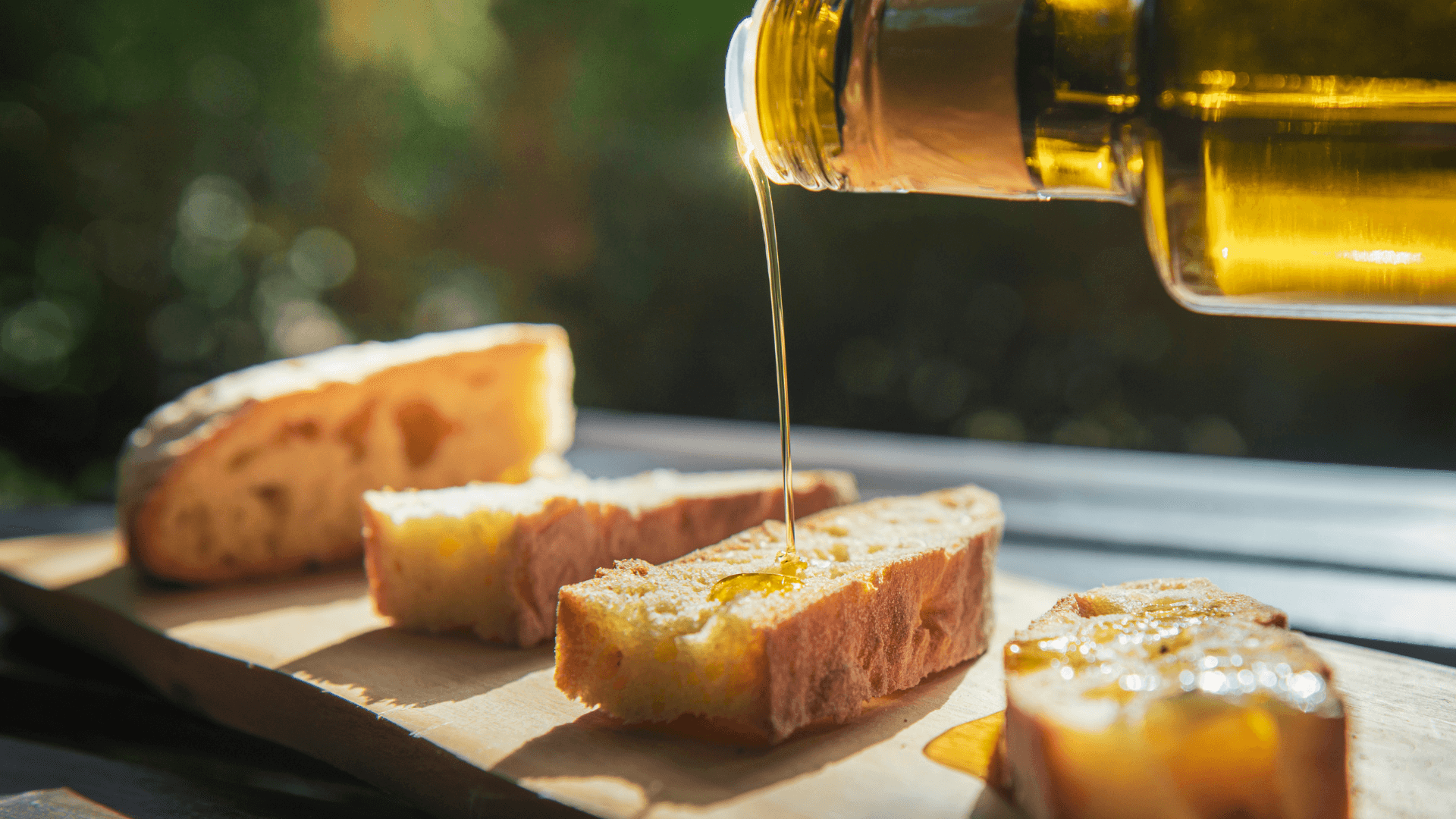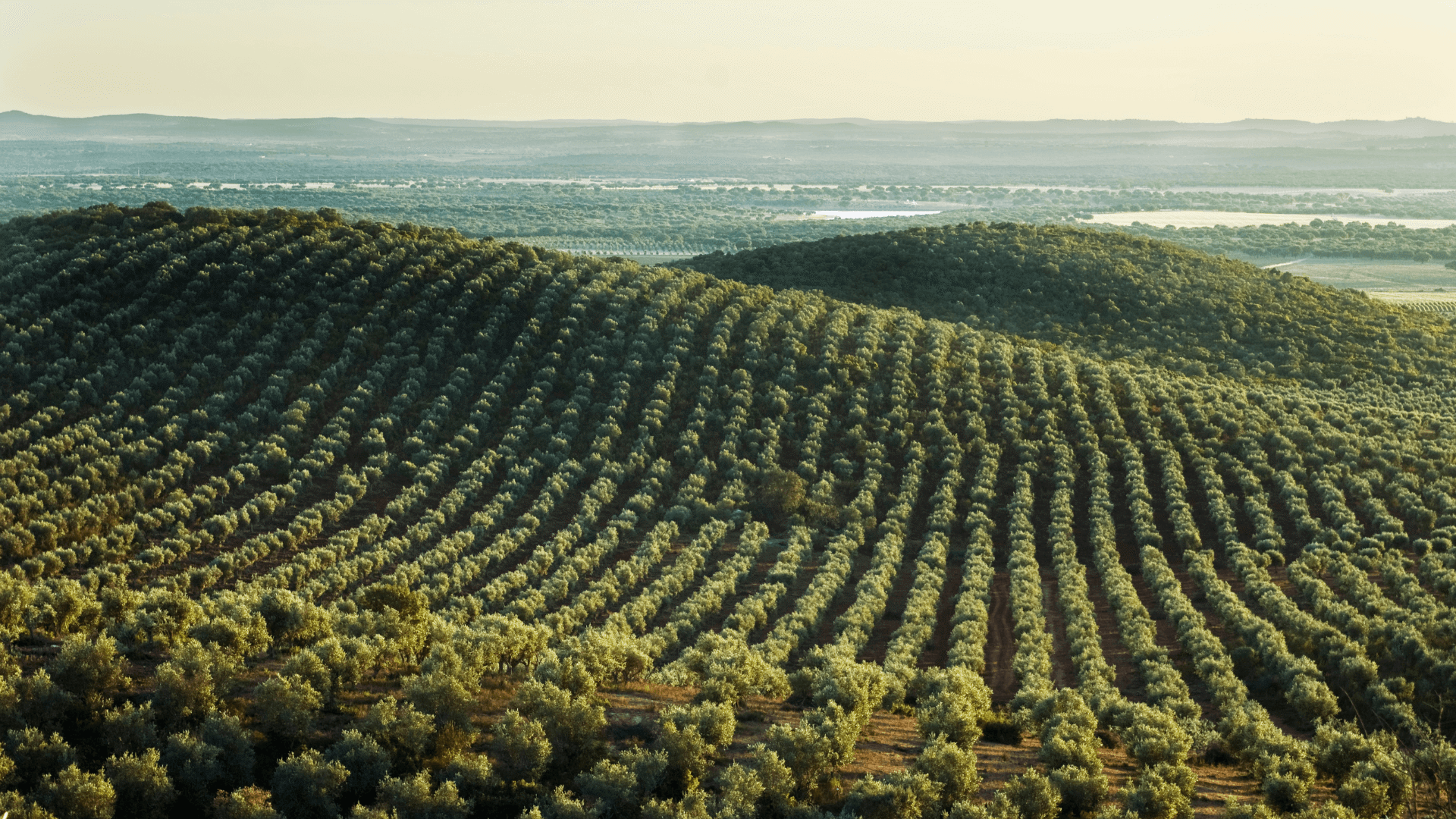Get to know the six regions with Protected Designation of Origin in olive oil production. Help out with the olive picking and enjoy a delicious Portuguese olive oil tasting.
Olive oil is part of Portuguese culture and identity. From north to south, the greenish hue of the olive trees colours the natural and agricultural landscape. Did you know that Portugal is among the world's largest producers of olive oil and that some of the best olive oils in the world are produced here?
Olive oil is the basis of the Atlantic and Mediterranean diets and therefore enjoys a privileged place in Portuguese cuisine. In fact, it is an essential ingredient in numerous recipes and an indispensable condiment for salads, potatoes and cooked vegetables.
There are six Portuguese olive oils with Protected Designation of Origin (PDO): Trás-os-Montes, Beira Interior, Ribatejo, Norte Alentejo, Alentejo Interior and Moura.
To travel the Portuguese Olive Oil Route is to experience flavours and discover the tradition and history of olive oil production. It is also another way to explore different Portuguese regions, their fantastic landscape and cultural heritage, their traditions and their people.

An excellent way to start the Olive Oil Route is to begin your journey in Portugal’s northern hinterland: Trás-os-Montes. The beauty of the mountains, the valleys, the ancient villages and the extensive olive groves that dot the landscape will amaze you.
The route through the mountains takes in Alfândega da Fé, Alijó, Bragança, Carrazeda de Ansiães, Freixo de Espada à Cinta, Macedo de Cavaleiros, Mirandela, Mogadouro, Murça, Tabuaço, Torre de Moncorvo, Valpaços, Vila Flor, Vila Nova de Foz Côa and Vimioso. Visit beautiful typical villages, discover their customs and relax in natural settings.
If you travel to the region between October and December, you can take part in a traditional olive harvest. In Trás-os-Montes, the Verdeal, Madural, Cobrançosa and Cordovil varieties of olives are grown, giving the local olive oil a soft, fruity, slightly bitter and spicy flavour.
To learn more about olive oil farming and production in the region, we suggest you visit Mirandela's Olive and Olive Oil Museum.
One last note about the Trás-os-Montes region: it is also known for the hospitality and friendliness of its people and the unique flavours of its cuisine. Alheira de Mirandela (Mirandela Sausage), folar de Valpaços (Valpaços Loaf), feijoada à transmontana (Trás-os-Montes meat, rice and black beans) and typical meats and sausages are some of the delicacies you really should try.
2nd stage of the Olive Oil Route: visit the oil presses of Beira Interior

The Beira Interior area is bordered to the north by the region of Trás-os-Montes and Alto Douro, and is rich in history and natural beauty.
There are several oil presses open to the public in Portugal's most mountainous region. In Cortiçô, Fornos de Algodres, a modern olive oil press co-exists in the Casa do Cabo with its 400-year-old ancestor, allowing visitors to observe the different ways in which olive oil is produced. Also in Fornos de Algodres, but in Cadoiço, you can visit the Herdeiros de Emídio Ferreira olive oil press, which is already regarded as a symbol of the region.
In Vila Velha de Ródão, in turn, a visit to the Lagar de Varas is a must. Here, all the historical phases of olive oil production are documented, from the use of human and animal energy to hydraulics and mechanics.
In Belmonte, the birthplace of Álvares Cabral and with its historical links to the Jews, you can visit the Museu do Azeite (the Olive Oil Museum), which was built on an old olive oil press. There is an olive grove outside, and here you can find out about the traditional olive oil production process, as well as its important role in the local economy. At the end of your visit, you can taste different types of olive oil.
For those visiting the region during November, you can watch and even take part in the olive harvest. In January, the month that marks the end of the pressing period, the traditional "lagarada" or olive-treading still takes place in some villages. In this festivity, family and friends gather in the village's lagar (olive oil press) to eat codfish drizzled with olive oil. The festivities continue into the winter night as singing and dancing take place in the village streets.
3rd stage of the Olive Oil Route: olive oil tasting in Ribatejo

On the right bank of the Tagus, olive trees grow beside vines, wheat and corn. You can visit several olive oil-producing farms in this region steeped in tradition, history and culture.
In Comeiras de Baixo, Quinta do Juncal has 155 hectares of traditional olive groves, as well as intensive olive groves and hedgerows. As well as the olive groves, you can visit the olive oil press and taste the olive oil.
In Póvoa de Santarém, the Quinta da Ribeirinha Restaurant was built on an old olive oil press in this wine tourism resort. To preserve the history of the old press, the traditional structure of the mill, the millstones, the boiler and their related activities have been preserved. The Quinta produces wine, extra virgin olive oil and jams. It is possible to visit the vineyards and the winery and take part in wine and olive oil tastings.
In the picturesque town of Golegã, known as the horse region, you will find the Casa Agrícola, where JH Luz Olive Oil has been produced for over a century. The olive oil produced here, from the Picual and Cobrançosa varieties of olives, can be tasted in the setting of the old presses, with tasty slices of bread and corn bread. You can also help out with the olive harvest, by appointment.
4th stage of the Olive Oil Route: Alentejo, Portugal's largest olive oil producing region

The typical olive varieties in the Alentejo are: Cobrançosa, Cordovil, Galega and Verdeal. This treasure of the Alentejo terroir is a low acidity olive oil, with exceptional quality and flavour.
You can visit some of the beautiful olive groves and olive presses in the north of Alentejo, from Portalegre to Reguengos de Monsaraz, and then explore olive oil production in Moura, Serpa, Vila Verde de Ficalho and finally in the region of Alentejo Interior, which includes Portel, Vidigueira and Torrão. To learn more about the production process and the history of olive oil, visit the Moura Olive Oil Museum.
The Alentejo is known as a top destination for food lovers and olive oil is deeply rooted in the region's traditional recipes. Try the açorda (Alentejo bread soup), the ensopado (bread stew), or the migas (sauteed breadcrumbs with leftover meat) from the Alentejo, washed down with a fragrant drizzle of olive oil. Enjoy savouring all these flavours!





